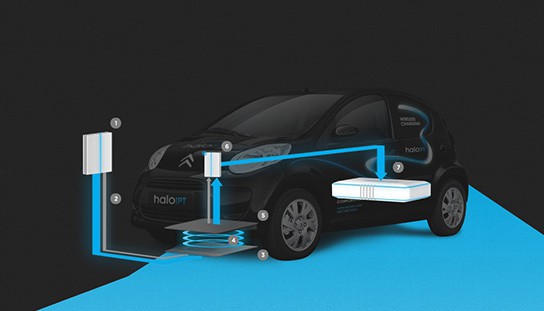
(image credit: HaloIPT)
our recent post on Blink Network of EV charging stations prompted us to wish for a wireless or contact-less charging alternative in the market. not that we own any of those EVs at this moment but the prospect of handling high current electricity scares us off (we are simply afraid of electricity except for those we use in the house). contact-less charging for small gadgets is already a reality, so why shouldn’t it be adapted for EV? our wish has been answered in the form of HaloIPT‘s Inductive Power Transfer or IPT.
[ad#Google Adsense-text-468×60]
HaloIPT offers the world first wireless charging, allowing charging pads to be installed in the garage or public parking areas and its dynamic charging capability means a network of charging pads can be embedded on highways, charging your EV as it travels along it. thus, lifting the bar of the range limiting the current EVs. essentially, the system consists of two parts: a primary-side power supply with wide track (also known as the transmitter) and a secondary-side pick-up pad (also known as the receiver) with controller. power transfer is through magnetic resonance, transmit from the ground pad to the vehicle’s pad.
i guess automotive manufacturers should take part in this development as part of a greater effort to make EVs a more attractive alternative to gas-powered transport. short range limitation, hassle of charging – especially the time taken to charge an EV are huge hurdle blocks in making EVs a complete success. when a gas-powered vehicle ran out of fuel, all you need to is to make it to the nearest gas station and you will be good to go in five minutes while EV, has to wait for two to three hours for it to fully juiced up or at best, as the Blink Level 3 charging station promised, in 30 minutes. therefore charging on the go, might be the key to EV success in near future.

